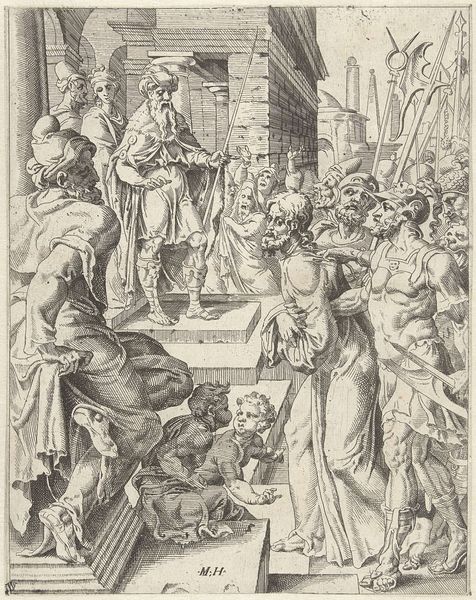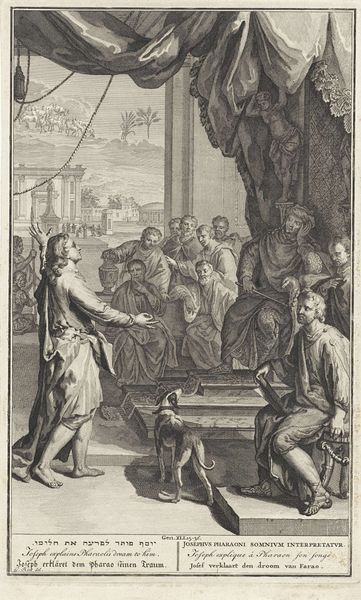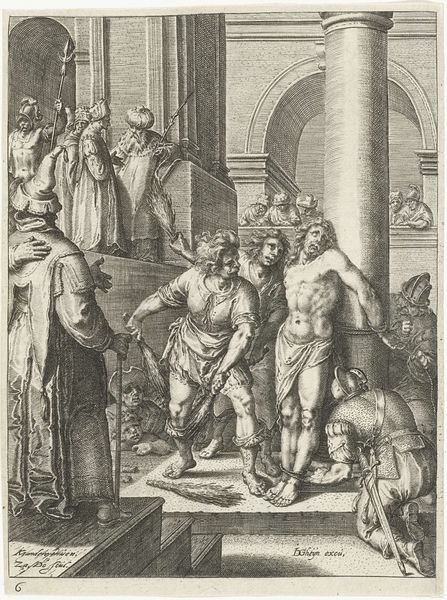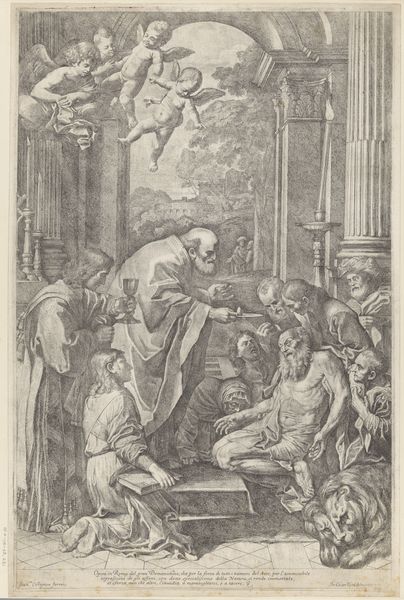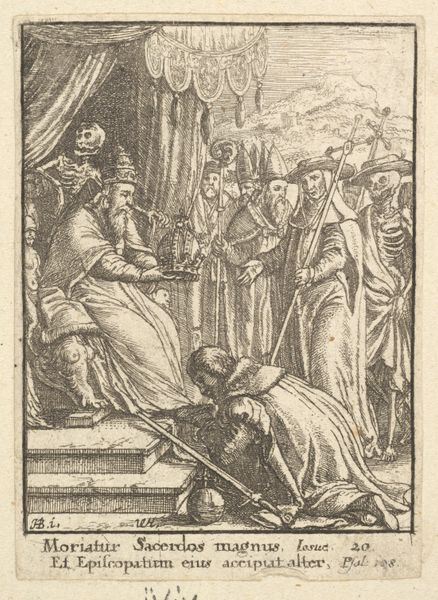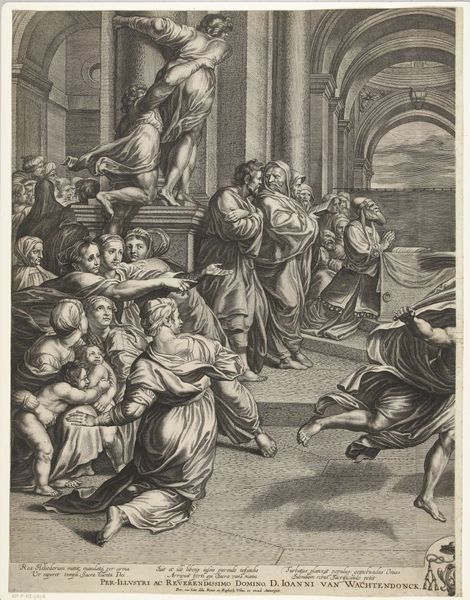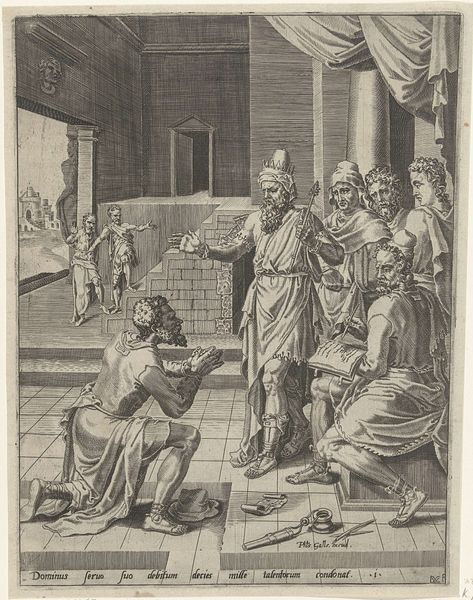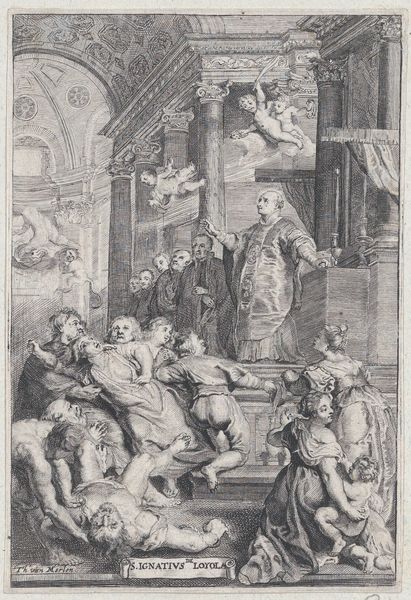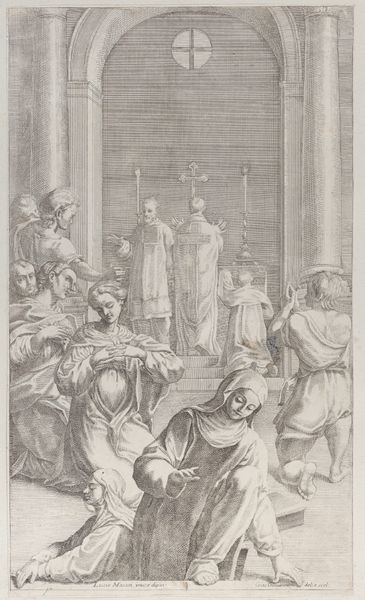
print, engraving
#
narrative-art
#
baroque
# print
#
old engraving style
#
figuration
#
history-painting
#
engraving
Dimensions: height 435 mm, width 338 mm
Copyright: Rijks Museum: Open Domain
Curator: Before us is "Christus voor Kajafas," or "Christ Before Caiaphas," an engraving made in the 1630s by Marinus Robyn van der Goes, currently held in the Rijksmuseum collection. Editor: My first impression is the incredible tension. The artist really captures that charged moment with the textures of the garments almost vibrating against each other, from rough cloth to smooth skin. It all adds to a general sense of visual discord. Curator: Precisely! Consider how the artist structures the composition; the contrast of dark and light to direct the gaze is carefully orchestrated. Van der Goes employs baroque dynamics within the engraving’s frame by arranging figures as if a tightly interwoven, active composition in a stage set, rather than as figures in repose. Editor: Speaking of drama, note the figure of Caiaphas himself rending his garments. That action carries such weight; it signifies outrage, but also authority. His expressive reaction has a double significance here: while the gesture condemns, it also confirms Jesus' pronouncement of divine status, solidifying the theological interpretation. Curator: And isn't the perspective fascinating? Van der Goes manages to imply depth through linear structure while acknowledging the print’s essential flatness, further enlivening its optical impact. Even the architectural details act as a scaffolding that binds together and releases various sightlines for narrative. Editor: Also of great interest is the dog sitting quietly at the lower center of the print, and I see his role symbolically. Throughout art history, dogs may symbolize loyalty, guidance, or simply domesticity. Here the hound at Jesus's feet is more likely meant to reference those allegiances questioned by Jesus' persecution. Curator: An interesting observation. This work clearly displays van der Goes' deft handling of light, shadow, and complex compositional arrangements. Editor: It has shown how seemingly small visual cues accumulate symbolic importance and provide new insights. Thanks for drawing out these crucial structural features in our reading of this piece.
Comments
No comments
Be the first to comment and join the conversation on the ultimate creative platform.
